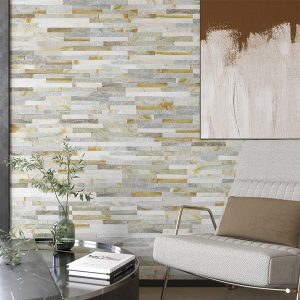Introduction:
Cultured onyx, a stunning and versatile material, has been gaining popularity in the world of interior design and architecture. With its unique aesthetic appeal and numerous practical benefits, cultured onyx offers a wide range of applications in residential and commercial spaces. In this article, we will delve into the origins of onyx, the process of culturing onyx, its characteristics, uses, advantages, and the growing trend of incorporating this exquisite material into contemporary design.
Origins of Onyx:
Onyx is a type of natural stone that belongs to the mineral group of chalcedony. It is formed in the cavities of volcanic rock, where mineral-rich water flows and deposits layers of crystalline material over time. The striking beauty of onyx lies in its unique color variations, translucency, and distinctive veining patterns, making it a sought-after material for decorative purposes. Onyx has been used for centuries in architecture, sculpture, and jewelry, prized for its elegant appearance and luxurious feel.
Culturing Onyx:
Cultured onyx is a manufactured stone product that replicates the look and feel of natural onyx while offering greater consistency in color and pattern. The process of culturing onyx involves combining natural minerals, resins, and pigments to create a composite material that mimics the characteristics of onyx. By controlling the production process, manufacturers can produce cultured onyx in a wide range of colors, patterns, and finishes to suit various design preferences.
Characteristics of Cultured Onyx:
Cultured onyx shares many of the same characteristics as natural onyx, including its translucency, veining patterns, and unique color variations. However, cultured onyx offers several advantages over its natural counterpart. Cultured onyx is more durable and resistant to stains, scratches, and heat, making it a practical choice for high-traffic areas such as kitchen countertops and bathroom vanities. Additionally, cultured onyx is easier to maintain and can be customized to achieve specific design requirements.
Uses of Cultured Onyx:
Cultured onyx is a versatile material that can be used in a wide range of applications in interior design and architecture. One of the most popular uses of cultured onyx is in countertops, where its luxurious appearance and durability make it an ideal choice for kitchen and bathroom surfaces. Cultured onyx can also be used for wall cladding, flooring, fireplace surrounds, and decorative accents to add a touch of elegance and sophistication to any space. In commercial settings, cultured onyx is often used in hospitality projects, such as hotels, restaurants, and retail spaces, where its aesthetic appeal can create a memorable and luxurious experience for customers.

Advantages of Cultured Onyx:
There are several advantages to choosing cultured onyx over natural onyx and other materials for interior design projects. Cultured onyx offers greater consistency in color and pattern, allowing for more predictable results in design applications. Cultured onyx is also more affordable than natural onyx, making it a cost-effective alternative for those looking to achieve the look of onyx on a budget. Additionally, cultured Ledge stone for historical preservation is easier to install and maintain, reducing the overall time and effort required for upkeep. With its durability and resistance to wear and tear, cultured onyx is a practical choice for both residential and commercial projects.
Trends in Cultured Onyx Design:
In recent years, there has been a growing trend towards incorporating cultured onyx into contemporary design schemes. Designers and architects are drawn to the unique beauty and versatility of cultured onyx, using it to create statement pieces and focal points in their projects. From backlit onyx panels to onyx countertops with waterfall edges, the creative possibilities with cultured onyx are endless. The use of cultured onyx in combination with other materials, such as wood, metal, and glass, can create a harmonious and visually striking aesthetic that elevates the overall design of a space.
Conclusion:
Cultured onyx is a remarkable material that offers a perfect balance of beauty, durability, and versatility for interior design and architectural applications. With its ability to mimic the natural beauty of onyx while providing practical benefits such as durability and ease of maintenance, cultured onyx has become a popular choice among designers and homeowners alike. As the trend towards incorporating luxurious and sophisticated materials into interior spaces continues to grow, cultured onyx is sure to remain a timeless and elegant option for creating stunning and memorable design environments.
